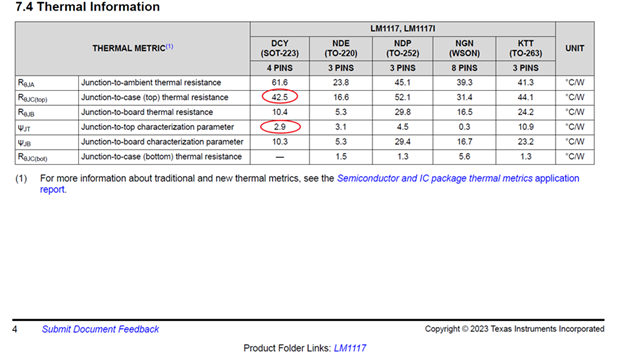Tool/software:
Hi team,
Customer use LM1117I, Vin=7V, Vout=5V, Iout=0.6A. They test temperature of the IC case is 70℃, but the Vout decrease to 0 quickly.
I have 2 questions:
- Does this trigger over temperature shutdown?
- How to calculate the Tj, could you help give the equation? Use which thermal resistance? 42.5°C/W or 2.9°C/W?

Best wishes,
Leo Ma


 where Power is the power dissipation. However, RθJA is a variable function of not just the package, but of many other system level characteristics such as the design and layout of the printed circuit board (PCB) on which the part is mounted. Also note that
where Power is the power dissipation. However, RθJA is a variable function of not just the package, but of many other system level characteristics such as the design and layout of the printed circuit board (PCB) on which the part is mounted. Also note that  .
.